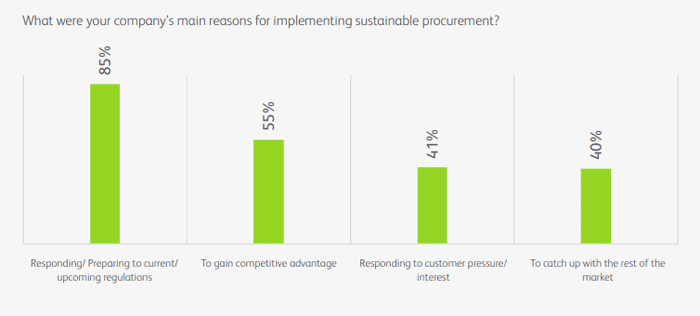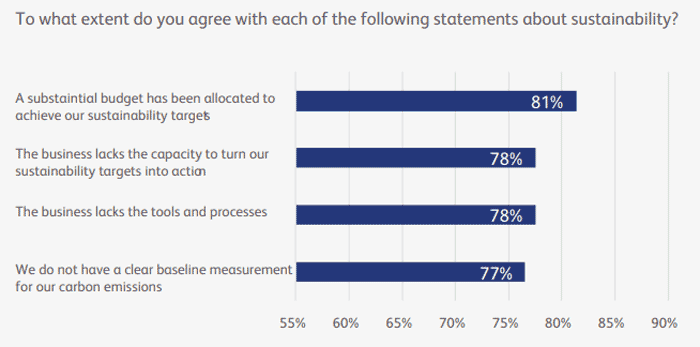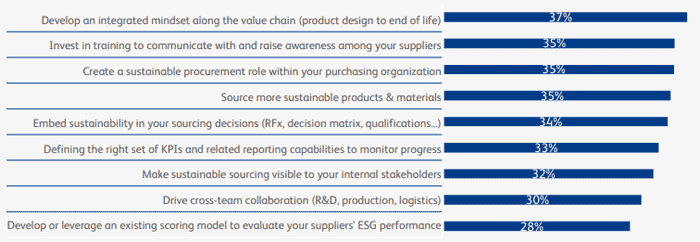There is a lot of momentum behind Green procurement in most companies, but gaps between strategy and execution are limiting progress for many.
Supply Chain Digest Says...
|
 |
| While a strong 81% reported having a substantial sustainability budget, high percentages of respondents also said there were real challenges with having capabilities to turn strategies into action. |
 |
What do you say? |
| Click here to send us your comments |
|
 |
| Click here to see reader feedback |
|
So finds a new global study from UK-based consulting firm BearingPoint, based on 640 survey responses (200 in the US, 200 in Asia, 240 in Europe).
The new report finds that the three major barriers that prevent companies from achieving their sustainability goals are:
• Insufficient training
• Difficulty in translating the impacts into financial costs and benefits
• A lack of measurement on supply chain sustainability
The report calls out a gap between the perceived importance of Green procurement and its realization, but it is modest. The survey found that sustainability is a major business target for 83% of the respondents, while a somewhat lower 73% rate their own company’s approach to sustainable procurement as very advanced.
The survey also looked at the perceptions of C-level execs versus lower level managers, and again found a gap.
Those in leadership positions are almost twice as likely (21%) to rate their own company’s sustainable procurement approach as being extremely advanced, versus just 11% for those in operational roles.
“A key learning to be taken into consideration in achieving concrete results is the following: if C-levels share ambitious visions and targets for more sustainable business, their teams in return expect clear guidance on how to reach them,” the report notes, adding that “When it comes to translating C-levels’ ambitions into concrete execution methods, there are still a lot of question marks.”
Interestingly, companies said government regulations were the most important driver of Green procurement initiatives, cited by 85% of respondents, as shown in the graphic below. Customer pressure was in third place, at a much lower 41%.

(See More Below)
|
CATEGORY SPONSOR: SOFTEON |
|
|
| |
|
|
Also interestingly, the survey found that the two major challenges to more Green improvement were as follows:
• Conflicting procurement priorities: How can I source better if my main goal is to cut costs?
• Lack of digitization/technology: How do I gain transparency on the products I purchase and my suppliers without robust tools?
Another interesting chart looks at several different perspectives on the status of Green procurement. As can be seen below, while a strong 81% reported having a substantial sustainability budget, high percentages of respondents also said there were real challenges with having capabilities to turn strategies into action, developing supporting processes and tools, and having clear CO2 emission baselines.

The report also notes that implementing sustainable procurement of course also requires having your suppliers on board. Respondents identify that their suppliers mostly experience the following impediments:
• Insufficient training
• Lack of reporting on supply chain sustainability/transparency
• Lack of management support
Finally, what are the key steps companies can take to improve execution of Green procurement strategies? As seen in the graphic below, developing an integrated mindset along the value chain (product design to end of life) was the top response, but all the other choices were clustered close together in terms of percentages of respondents:

The full report can be downloaded here with registration: Sustainable procurement pulse check 2021
What do you think of the data in this report? Let us know your thoughts at the Feedback section below.
|